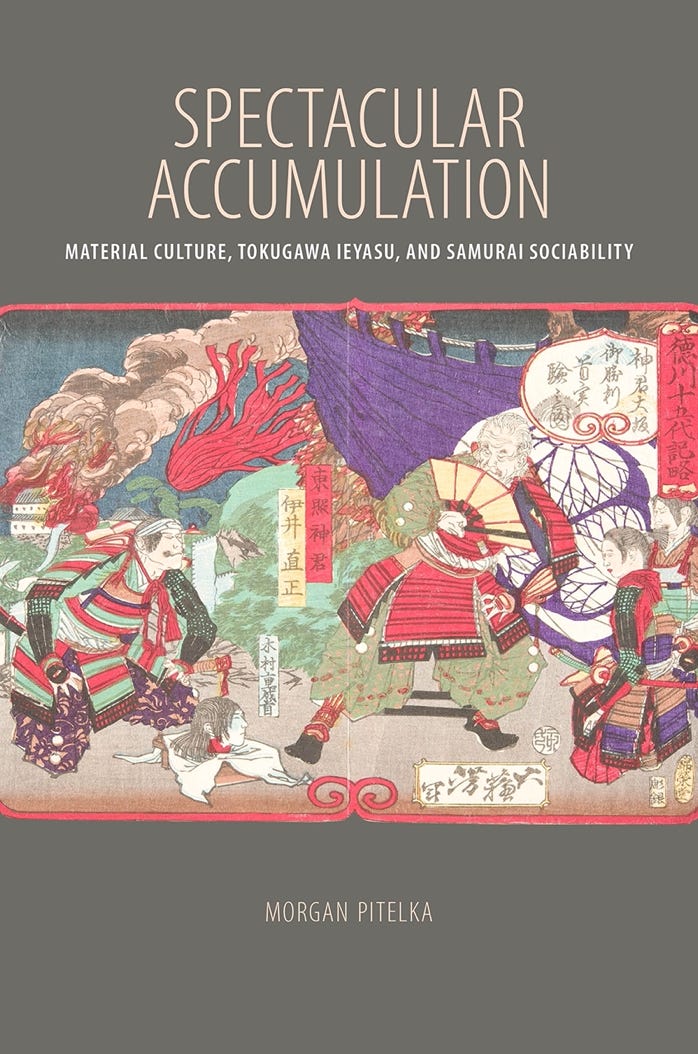Tokugawa Ieyasu, one of the most famous warriors in Japanese history, was born in 1543 into a society in the throes of civil war and an elite warrior family in difficult circumstances. His father, ruler of the northern part of Mikawa Province, was only sixteen and his mother only fourteen. His talented grandfather, who had helped establish the family name and had built Okazaki Castle, had been assassinated before he reached the age of twenty five. As a result of the constant battles between rival warlords and the practice of exchanging family members as guarantees of loyalty, this young samurai’s life was not likely to be stable. Premature death and separation from one’s loved ones were in fact common experiences for many warriors in this period. His own father was engaged in a string of campaigns against more powerful warlords that surrounded and threatened his territory. As a gesture of conciliation, Ieyasu’s father sent him, at the age of five, as a hostage to a neighboring warlord.
In transit, however, he was kidnapped by yet another rival warlord, and two years into his life in that domain learned that his father had died. Later that year he was transferred to Sumpu castle where he became a hostage of the Imagawa until the age of eighteen. Young samurai hostages such as Ieyasu were rarely treated as prisoners. In fact, at Sumpu Ieyasu received a full education in the military and cultural practices of the samurai; he learned to love the outdoors and the practice of falconry in particular; he was married at the age of fifteen to a relative of his captor; and he was sent on his first sortie at the age of sixteen. But even when he seized his independence as head of his natal family at the age of eighteen, defeated an uprising at the age of twenty-two, and unified Mikawa and took the name “Tokugawa” at the age of twenty-four, his successes were related to the ongoing collapse of the old system of warrior authority.
Contrast these early experiences of insecurity with Ieyasu’s later life. In 1590 Ieyasu became ruler of the largest territory in all of Japan, the eastern provinces formerly controlled by the Hôjô, and he set up his new headquarters in the village of Edo. Ten years later, he defeated at Sekigahara a powerful but ultimately disjointed assortment of warlords opposed to his preeminent national position and was rewarded in 1603 with court appointment to the post of Shogun, allowing him to establish a new warrior government for Japan. In an act of confidence and to guarantee succession, he stepped down from the position of Shogun in 1605 and passed it on to his accomplished son Hidetada. Ieyasu then spent his remaining years doting on his children and grandchildren and advising his son in Edo and from his retirement residence in Sumpu, where he had lived all those years before as a hostage. Ieyasu’s life as a child and young man had been characterized by violence and insecurity, but his retirement included a range of experiences that had long been appreciated by warlords and that now could be pursued with vigor because of his security and status, such as regular banqueting, hunting for sport, leisure travel, and patronage of the Noh theater. Like the struggles of his early career, these were still deeply political acts: alliances could be struck over tea, land could be confiscated in the name of hunting rights, and status could be displayed through the acquisition of antique paintings or powerful Noh masks. But the methods of confrontation had changed.
When Ieyasu died in 1616, he was surrounded by friends, family, and vassals, relatively secure in the knowledge that he had pacified the armies that had wreaked havoc on the country for over a century. His successors would struggle to perpetuate this Pax Tokugawa, but Ieyasu’s part, at least, was done. Though it would be artificial to name one event or date as the tipping point in the transition from a society at war to a society at peace, it seems clear that Ieyasu began his life in volatility, and ended it in stability.
Excerpted from Morgan Pitelka, "The Early Modern Warrior," Early Modern Japan: An Interdisciplinary Journal v. 16 (2008), p. 33-42.
